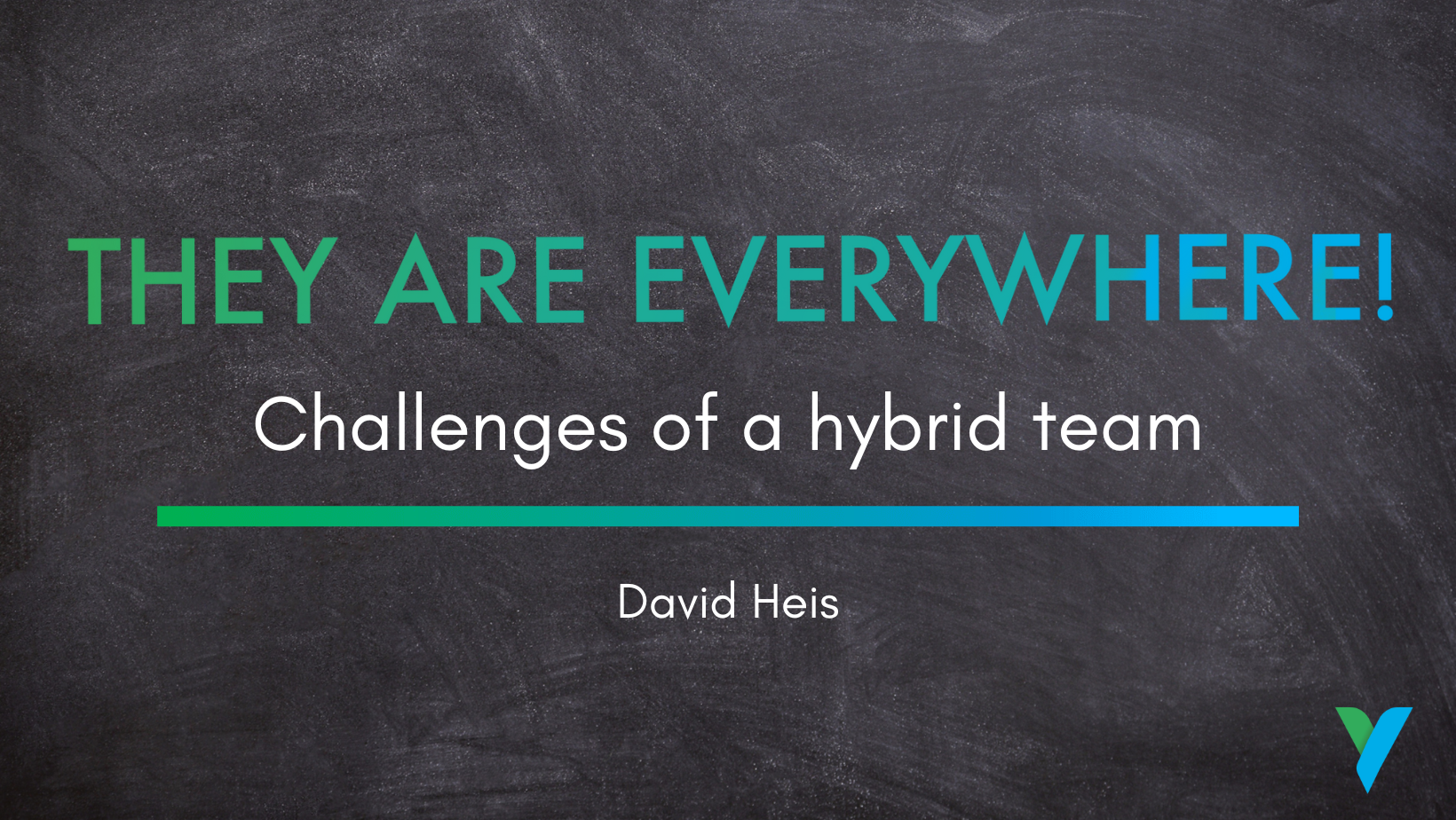Back in the day, when I was a young, bright eyed junior technical consultant, your work location was clear. Monday and Friday at the office and Tuesday to Thursday at the customers. Occasionally you had home office (HO) if the gas man showed up. Then Covid hit and we all were locked into our homes working from there, with all the drawbacks and benefits that came along with it. Thankfully, it seems like we outlasted Covid, but HO is here to stay.
For me that means I lead a team that is spread over two separate locations and enjoys a very liberal HO policy. So how do you manage to create an actual team out of a group of people that only meet physically a few times a year?
The Basics
It should be obvious, but the most basic and important thing is an infrastructure that is conducive to a hybrid working model. You need some type of communication software that connects everyone, central data storage, collaboration tools (at this point I would like to highly recommend Miro), VPN logins and more. Oh, and the hardware side must be covered. I know of companies that use exclusively desktop pcs and don’t allow the use of private devices which makes it hard to actually work from home.
Even if you have all the technical parts in place, you still need to define structures on how they are used. Where do we store information? How do we manage tickets in Jira? Stuff like that might seem obvious and you could assume that this is all clearly defined but ask your colleague how they think these processes work. You might be surprised. I know I often am.
Empower them
Let’s face it, if you are not all working at the same office communication gets more difficult. People seem to be under the impression that this is a new development with the rise of the remote work, but in my experience the same effect arises when people have to walk down the hall to ask a question.
Since communicating requires more effort one logical conclusion seems to follow: Reduce the communication to what is necessary. This means allow people to make their own decisions, so they don’t have to ask five others before moving forward. Also make sure that when inevitably one of these decisions turns out to be wrong, you have a positive culture of dealing with errors. Because if you don’t, people will actively work against being empowered.
Grab a coffee!
Do you know what I missed most during the lockdown? Grabbing a coffee and just talking about stuff. That is why we started a coffee group in teams. And having coffee or lunch together is so important for learning about people outside of work and establishing the interpersonal relationships that, in my opinion, transform a group of people that work together into a team.
In our team we currently have a 15min team coffee break twice a week where people can join if they want, and we just talk about stuff. It might not be a perfect replacement for what tends to happen naturally, when everyone is at the same location. But for now, it works for us and if we come up with a better way to do it, I’ll be sure to let you know.
These are some of the ideas that we try to incorporate in our hybrid team. In short, I think I would summarize it with “Enable people to do their work and make sure they don’t see others just as names on a screen”. It is a challenge to structure your teams like that but there are a lot of possible benefits for the company and the employees.
